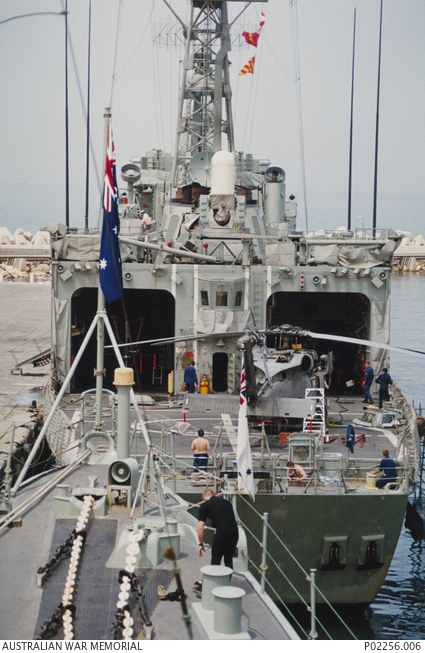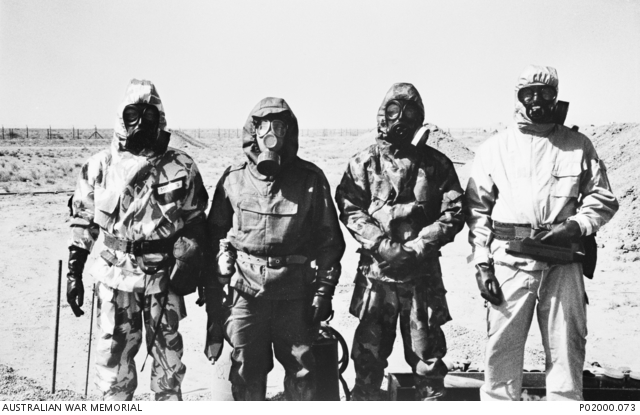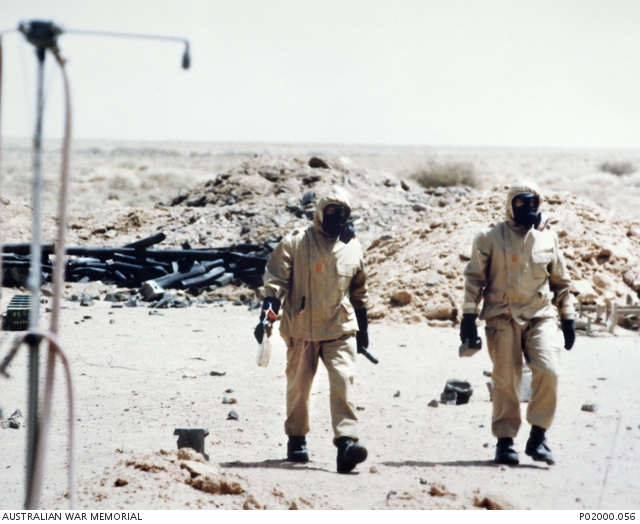Gulf War 1990-1991
17 January 2021 marks thirty years since the start of Operation Desert Storm, the military response by a US-led coalition of 35 nations against Iraq’s illegal occupation of neighbouring Kuwait in August 1990. The UN Security Council had set 15 January 1991 as the deadline for an Iraqi withdrawal from Kuwait, with which Iraqi dictator Saddam Hussein failed to comply.
A full-scale war unfolded when coalition forces began military operations against Iraq in the early hours of 17 January 1991, beginning with a devastating 42-day aerial bombing campaign against Iraqi military targets in Kuwait and the Iraqi capital, Baghdad. On 24 February 1991, coalition ground forces moved from Saudi Arabia against Iraqi positions, destroying what was left of Iraq’s ability to resist. After two further days of air strikes, Baghdad radio announced Saddam’s forces had been ordered to withdraw from Kuwait to the positions they had occupied before 2 August 1990. As they did so, they set fire to Kuwaiti oil wells and dumped millions of barrels of oil into the Persian Gulf. Less than 100 hours after the commencement of ground operations, a ceasefire was declared on 28 February 1991.
Australia was one of the 35 nations that contributed to the Gulf War. Of the 1800 ADF members who deployed to the region in 1990 and 1991, most were members of the Royal Australian Navy. They had helped to enforce UN economic sanctions against Iraq through naval blockade (HMAS Adelaide and Darwin), provided air defence for the US carrier battle group in the Persian Gulf (HMAS Brisbane and Sydney) and carried out sustainment and logistical support for coalition vessels (HMAS Success and Westralia). Some 20 members of the Australian Defence Force participated in Operation Desert Storm, attached to US and British formations, and four ADF surgical teams served aboard the US hospital ship Comfort.
After the ceasefire, RAN clearance divers from CDT3 deployed to Kuwait, where they cleared a number of ports of mines, explosive devices and ordnance left over from the Iraqi occupation. In May 1991, 75 ADF personnel deployed to Northern Iraq to help provide humanitarian relief to millions of Kurds displaced by ongoing turmoil in the aftermath of the conflict. Between 1991 and 1999, some 175 ADF personnel deployed to Iraq with UNSCOM – the UN mission that sought to oversee Iraq’s compliance with the destruction of its chemical, biological and missile weapons facilities.
Gulf War
Centenary of Service
Share your story with the Memorial
We want to hear from you
Thirty years on from the Gulf War, the Memorial would love to hear from veterans who participated in these events and may have objects, photographs or stories of their time in the Middle East Region they might donate to the National Collection.
Collection Items
Photos, artwork and objects from the Memorial's Collection
Explore the bridge of HMAS Brisbane
using google street view
On Closer Inspection
Explore the Royal Australian Navy’s Adelaide class FFG frigate and take a closer look at HMAS Sydney IV both inside and out. Click on pop up icons to see archival photos, watch videos, hear audio recordings, and uncover the stories behind one of the most capable warships in Australian Navy history.
Designed for long-range escort roles and equipped to undertake air defence, anti-submarine warfare, surveillance, and reconnaissance duties the Adelaide class FFG is considered by many to be one of the most capable warships in the Royal Australian Navy’s history.
You may like to read these...
Operation Desert Storm: Thirty Years On
Thirty years ago, the crews of Australian warships HMAS Brisbane and Sydney were on-station in the Persian Gulf and had ringside seats to a most awesome display of naval firepower.
Ephemera of the Gulf War 1990-1991 – Thirty years of collecting
Thirty years ago today hostilities between Iraqi and Coalition forces ended, bringing the Gulf War to a close. The Memorial has digitised its collection of ephemera from this period as part of the Memorial’s Digitisation Project 2018–2022.
The Gulf War: Australia's contribution 1990-91
Some 1,800 Australian Defence Force personnel served during the Gulf War between August 1990 and September 1991.
Welcoming home HMAS Sydney from the Gulf War, 1991
This year marks the 25th anniversary of the end of the Gulf war on 28 February 1991. One of the Australian vessels who served during the Gulf War was HMAS Sydney IV.
Royal Australian Navy records of the First Gulf War
Back in 1990 as I was flying back to Australia after a month in England I noticed the flight path took the plane over the Middle East. I didn’t think much of it at the time, as the Earth usually does from 20,000 feet, the area looked serene. Little did I know that in less than two weeks this serenity would be broken on 2 August 1990 when Saddam Hussein’s armies rolled into Kuwait and started what was to become the First Gulf War 1990-1991.





























